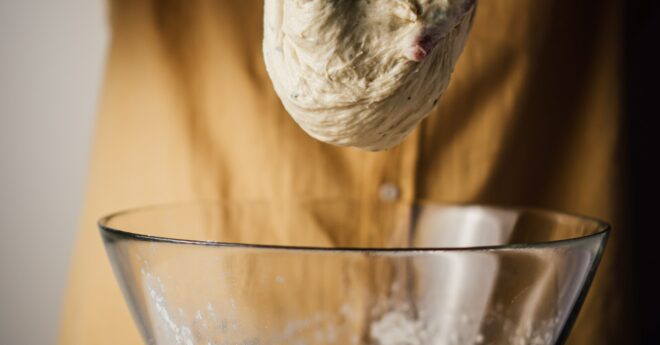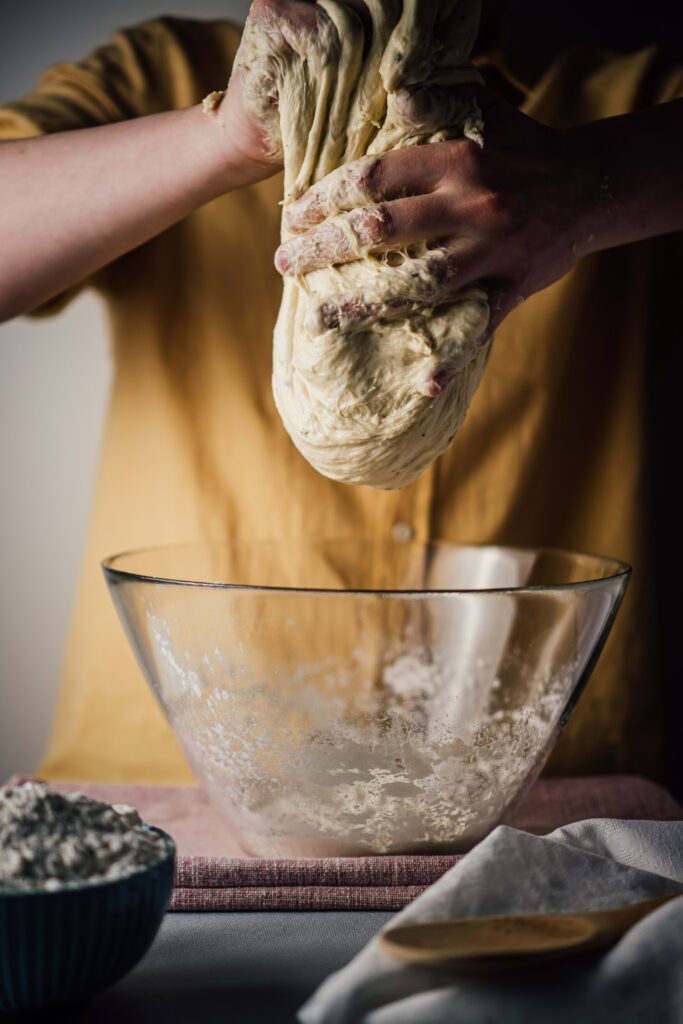
Yeasted Starter
Jan 18, 2024Posted by klintPrint
Photo by Adam Bartoszewicz on Unsplash
Traditionally, a yeasted starter is used for pizza, Italian bread, french baguettes and focaccia. By following a base recipe, I generally like to make a stiffer starter like a biga in the summer time and use more water in the winter as in a poolish.
Proper fermentation is key. The right amount of yeast should be used in combination with the right water temperature; both can vary depending on the season and room temperature.
The main goal is for the starter to double in size and until it reaches the peak dome and starts falling. This is the point when the starter is ready to use for making dough.
Experiment with water temperatures; adjustments must be made for seasonal temperatures (i.e. hotter seasons vs/winter) – room temperature also plays a big role.
With some practice adjusting your yeast amounts and water temperature to speed it up or slow it down, you will soon be capable of making a starter at night and have it perfectly ready when you wake up in the morning. After a while, this will become easier to “control.”
The starter can be retarded until you need it for your dough, -up to 12-16 hours.
If you will be making the dough using a refrigerated starter, you can use slightly warmer water in your mix (to compensate for the heat-loss in refrigeration).
Commercial yeast comes in dry form or fresh ( known as cakes)
The recipe below uses dry yeast. If you prefer fresh yeast, use 2.5 x more than dry.
Yeasted Starter
Equipment
- 1 Plastic container or glass jar
Ingredients
- 228 g Flour
- 170 g Water
- .5 g Yeast
Instructions
- Mix all the ingredients together. You can do it use mixer or do it by hand.
- Place the mix in the your container.
- Let it ferment for 10 to 12 hours.




